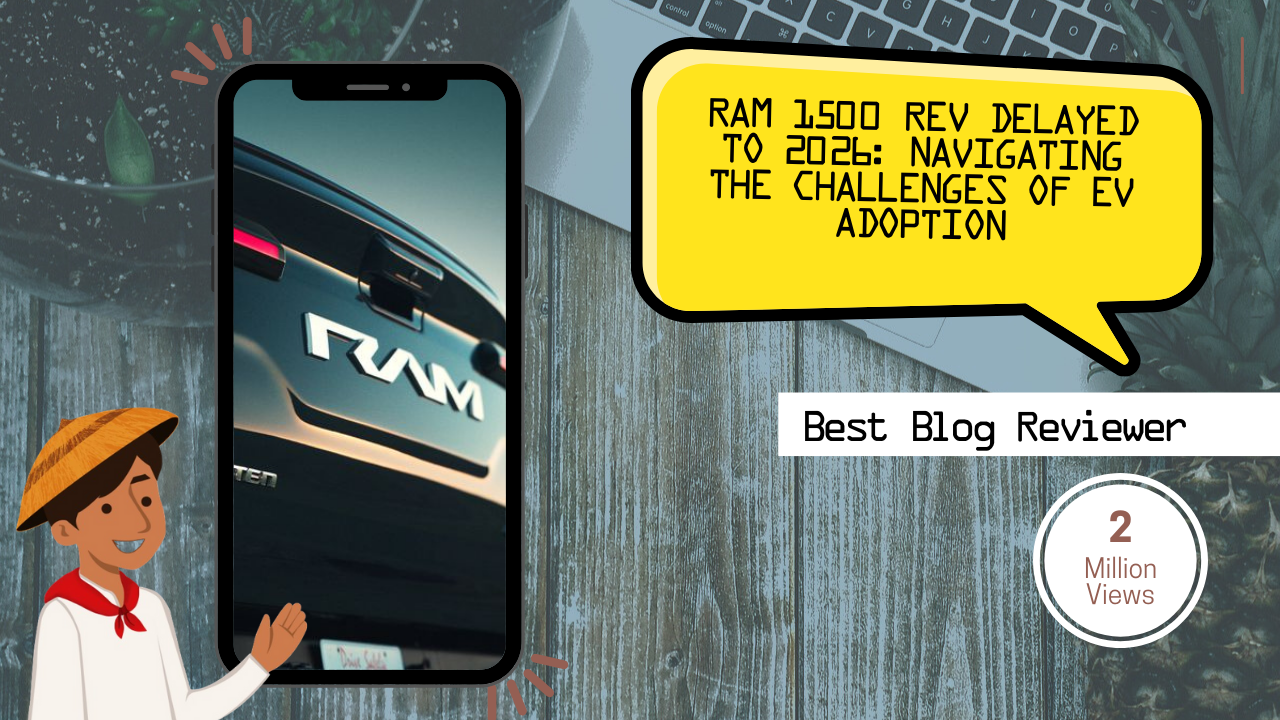The automotive industry is no stranger to delays and setbacks, but the recent postponement of the Ram 1500 Rev’s launch to 2026 has certainly raised eyebrows. Originally slated for a late 2024 release, the fully electric Ram 1500 Rev has faced multiple delays, with the latest one attributed to market demand and the complexities of electric vehicle (EV) adoption. This article delves into the reasons behind the delay, the implications for the EV market, and what this means for consumers and the industry as a whole.
Recent article: New Jersey Drone Hysteria: A Reflection of Our Uncertainty 2025
The Journey of the Ram 1500 Rev
The Ram 1500 Rev, Stellantis’s all-electric full-size truck, was first unveiled in early 2023 with much fanfare. The truck promised impressive specifications, including a 168-kWh battery pack delivering up to 350 miles of range and dual motors producing 654 horsepower. The initial excitement was palpable, with many eagerly anticipating the arrival of this powerful and eco-friendly truck.
However, as the development progressed, Stellantis faced several challenges that led to multiple delays. The company cited the need for additional testing and refinement to ensure the highest quality and performance standards. Additionally, the evolving landscape of the EV market and the slow demand for half-ton electric pickups played a significant role in the decision to push back the launch.
Market Demand and Industry Trends
One of the primary reasons for the delay is the slower-than-expected demand for electric trucks. While there is a growing interest in EVs, the transition from traditional internal combustion engine (ICE) vehicles to electric ones has been gradual. Consumers are still warming up to the idea of electric trucks, and the infrastructure for charging and maintenance is still developing.
Stellantis’s decision to prioritize the Ram 1500 Ramcharger, a range-extender version of the truck, reflects the company’s strategy to bridge the gap between traditional and electric vehicles. The Ramcharger, which combines a 92-kWh battery pack with a 3.6-liter V6 engine acting as a generator, offers a total driving range of 690 miles. This hybrid approach provides consumers with the benefits of electric driving while addressing range anxiety and the lack of charging infrastructure.
Challenges of EV Adoption
The delay of the Ram 1500 Rev highlights the broader challenges of EV adoption in the automotive industry. Developing a fully electric truck involves overcoming technical hurdles, such as battery technology, thermal management, and charging infrastructure. Additionally, educating consumers about the benefits and practicalities of EVs is crucial for widespread adoption.
Stellantis’s approach to addressing these challenges involves a combination of innovation and market adaptation. By introducing the Ramcharger as an interim solution, the company aims to build consumer confidence in electric vehicles while continuing to refine the fully electric Ram 1500 Rev.
Implications for Consumers and the Industry
The delay of the Ram 1500 Rev has implications for both consumers and the automotive industry. For consumers, it means waiting longer for a highly anticipated electric truck that promises impressive performance and eco-friendliness. However, the introduction of the Ramcharger provides an alternative that may appeal to those who are hesitant about fully electric vehicles.
Automakers must navigate the complexities of developing cutting-edge technology while ensuring that there is sufficient demand and infrastructure to support it. The Ram 1500 Rev’s delay serves as a reminder that the transition to electric vehicles is a marathon, not a sprint.
Looking Ahead: The Future of the Ram 1500 Rev
Despite the delays, the future of the Ram 1500 Rev remains promising. Stellantis is committed to delivering a high-quality, fully electric truck that meets the expectations of consumers and the demands of the market. The additional time will allow for further refinement and testing, ensuring that the Ram 1500 Rev is ready to make a significant impact when it finally arrives.
As the automotive industry continues to evolve, the Ram 1500 Rev will be a key player in the shift towards sustainable transportation. The lessons learned from this delay will inform future developments and help shape the future of electric vehicles.
Conclusion
The delay of the Ram 1500 Rev to 2026 is a reflection of the challenges and complexities of EV adoption. While it may be disappointing for eager consumers, it also highlights the importance of patience and innovation in the transition to electric vehicles. Stellantis’s approach to addressing these challenges through the Ramcharger and continued development of the Ram 1500 Rev demonstrates a commitment to delivering high-quality, sustainable transportation solutions. As we look to the future, the Ram 1500 Rev will undoubtedly play a significant role in shaping the landscape of electric vehicles.
